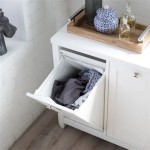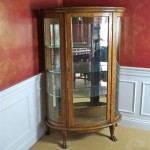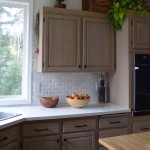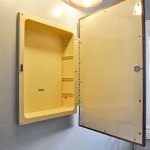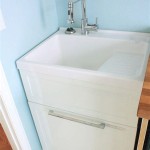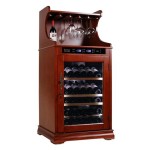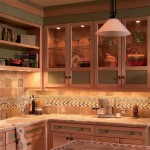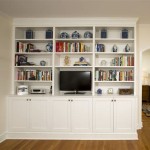Cabinet Handles Installation Guide
Installing cabinet handles is a relatively straightforward home improvement task that can significantly enhance the aesthetic appeal and functionality of kitchen cabinets, bathroom vanities, and other furniture pieces. This guide provides a comprehensive overview of the process, covering preparation, necessary tools, installation techniques, and troubleshooting common issues. Careful planning and attention to detail will ensure a professional-looking finish and durable installation.
Before embarking on the installation, it is crucial to select the appropriate cabinet handles. Consider the existing style of the cabinets and the overall design of the room. Cabinet handles come in a wide variety of materials, finishes, and designs, ranging from traditional knobs to modern pulls. The size and spacing of the handles should be proportionate to the size of the cabinet doors and drawers. Matching handles to other hardware in the room, such as drawer slides, hinges, and light fixtures, can create a cohesive and polished look.
Once the desired handles have been selected, the next step is to gather the necessary tools and materials. Having all the required items readily available will streamline the installation process and minimize potential delays. The essential tools include a measuring tape, pencil, level, drill (preferably with a variable speed control), drill bits (specifically sized for the mounting screws of the handles), a screwdriver (matching the screw type), a center punch or awl, and safety glasses.
Ensuring accurate measurements is critical for a uniform and professional installation. Inconsistent handle placement can detract from the overall appearance of the cabinets. A measuring tape with clear markings and a fine-tipped pencil are essential for marking the drilling locations precisely. A level will ensure that the handles are installed straight, preventing a crooked or uneven appearance. The center punch or awl is used to create a small indentation at the marked drilling locations. This indentation helps to prevent the drill bit from wandering during the drilling process, resulting in more accurate and centered holes.
Drill bits should be chosen carefully to match the size of the mounting screws provided with the cabinet handles. Using a drill bit that is too small can make it difficult to insert the screws, while using a drill bit that is too large can result in loose or stripped screws. A variable-speed drill allows for greater control during the drilling process. Starting at a low speed can help to prevent splintering or damage to the cabinet doors and drawers. Safety glasses are essential for protecting the eyes from debris during the drilling process.
Preparing the Cabinets for Handle Installation
Before drilling any holes, it's important to properly prepare the cabinets. This includes cleaning the surfaces and determining the desired handle placement. Use a mild cleaner and a soft cloth to remove any dirt, grease, or fingerprints from the cabinet doors and drawers. This will ensure a clean surface for marking and drilling.
Determining the optimal handle placement is a crucial step. For cabinet doors, handles are typically installed along the edge opposite the hinges. The height of the handle placement is often a matter of personal preference, but a common guideline is to position the handle approximately 2.5 to 3 inches from the corner of the door. For drawers, handles are typically centered horizontally and vertically. If the drawers are very wide, consider using two handles for better balance and aesthetics.
Once the handle placement has been determined, use a measuring tape and pencil to mark the drilling locations accurately. It is recommended to use a template, especially when installing multiple handles. A template can be created using cardboard or purchased from a hardware store. The template should have pre-drilled holes that correspond to the spacing of the mounting screws on the handles. This ensures consistent hole placement across all the cabinets.
After marking the drilling locations, use the center punch or awl to create a small indentation at each mark. This will help guide the drill bit and prevent it from slipping. Double-check the measurements and ensure that the marks are aligned properly before proceeding to the next step.
Drilling the Pilot Holes
With the cabinets prepared and the drilling locations marked, the next step is to drill the pilot holes. Use the drill with the appropriately sized drill bit to create the holes. It is recommended to start by drilling a small pilot hole using a smaller drill bit. This will further help to guide the larger drill bit and prevent splintering. Start with a low speed and gradually increase the speed as needed. Apply gentle pressure to the drill, allowing the bit to do the work.
When drilling through the cabinet doors and drawers, it is important to avoid drilling all the way through in one go. This can cause splintering and damage to the back side of the cabinet. Instead, drill partially through from the front, then flip the cabinet door or drawer over and drill the rest of the way through from the back. This will help to create clean, smooth holes on both sides.
After drilling the pilot holes, use a countersink bit to create a small recess around the top of each hole. This will allow the screw heads to sit flush with the surface of the cabinet, creating a cleaner and more professional look. Be careful not to countersink too deeply, as this can weaken the cabinet material.
Once the pilot holes have been drilled and countersunk, inspect the holes for any splinters or rough edges. Use a small file or sand paper to smooth out any imperfections. This will ensure a smooth and clean surface for the mounting screws to grip.
Attaching the Cabinet Handles
With the pilot holes drilled and prepared, the final step is to attach the cabinet handles. Insert the mounting screws through the handles and align them with the pilot holes. Use a screwdriver to tighten the screws until the handles are securely attached to the cabinets. Be careful not to overtighten the screws, as this can strip the threads or damage the cabinet material.
Check the alignment of the handles and make sure they are straight and level. If necessary, adjust the position of the handles slightly before fully tightening the screws. Once the handles are securely attached, test the function of the cabinet doors and drawers to ensure that they open and close smoothly.
After installing all the handles, clean the surfaces one last time to remove any fingerprints or smudges. Step back and admire the newly installed cabinet handles. The addition of new hardware can dramatically improve the appearance of the cabinets and the overall aesthetic of the room.
If the mounting screws are too long, they can be trimmed using a hacksaw or bolt cutters. Be sure to protect the threads of the screws before cutting them to prevent damage. A small file can be used to smooth out the cut ends of the screws.
In some cases, the existing holes in the cabinets may not align with the handle spacing. In this situation, it may be necessary to drill new holes. If the old holes are visible, they can be filled with wood filler and sanded smooth before painting or staining the cabinets.
If a handle becomes loose over time, it may be necessary to tighten the mounting screws. If the screws are stripped, they can be replaced with slightly larger screws or with screws that are specifically designed for wood.
By following these instructions and tips, anyone can successfully install cabinet handles and enhance the look and functionality of their cabinets. Patience and attention to detail are key to achieving a professional-looking result.

Cabinet Hardware Installation Guide At Cabinetknob Com

How To Install Cabinet Handles Straight Without Losing Your Mind

The Ultimate Guide For Cabinet Hardware Placement And Sizing Kitchen Inspiration Design

Cabinet Hardware Installation Guide At Cabinetknob Com

How To Install Cabinet Handles Straight Without Losing Your Mind

How To Choose And Install Cabinet Hardware Forbes Home

Design 101 Cabinet Hardware Placement Lark Linen

Cabinet Hardware Placement Guide

How To Place Cabinet Knobs Pulls

How To Install Kitchen Handles Like A Pro The Complete Guide
Related Posts

